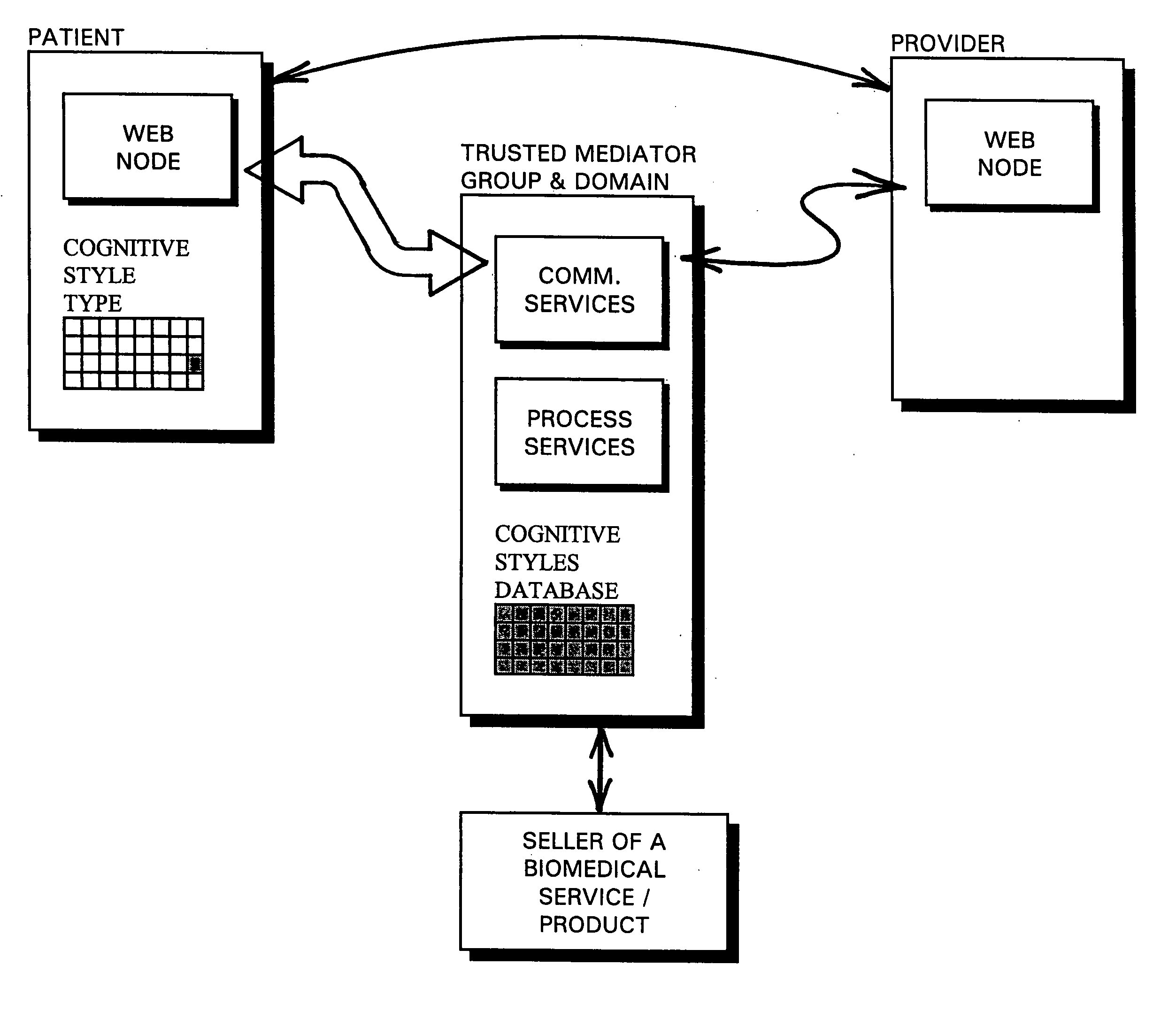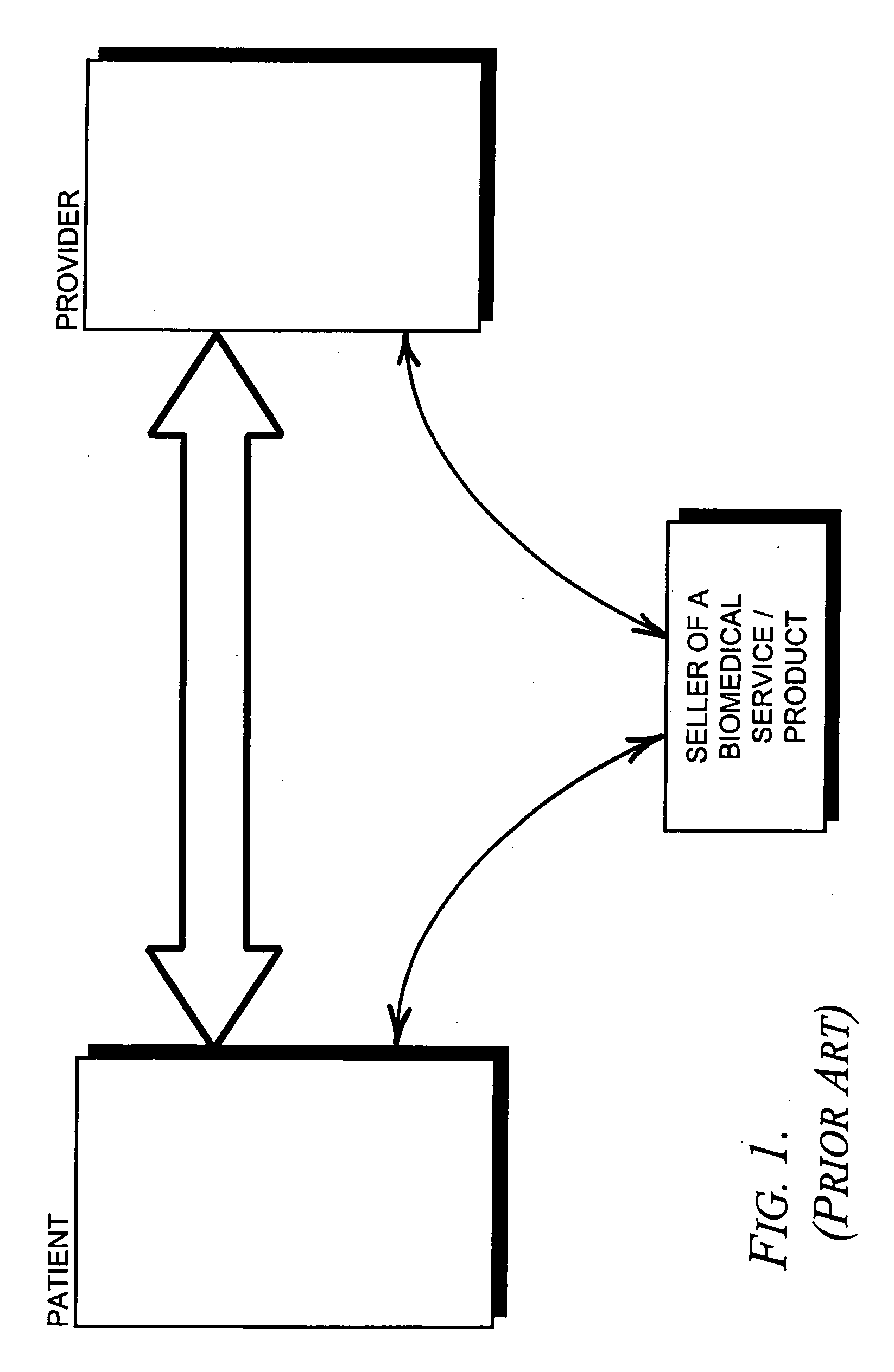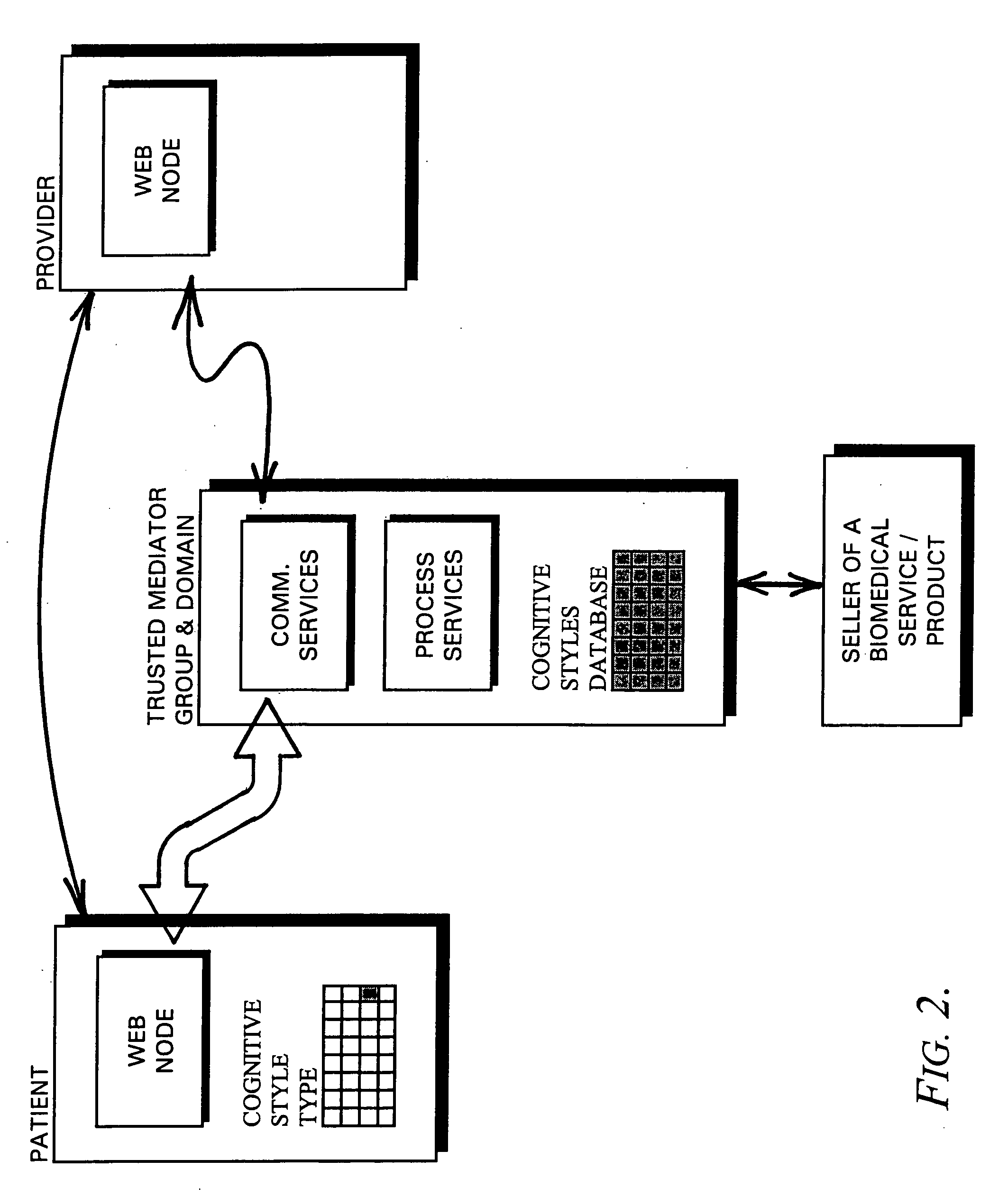A technical problem presently exists in the attempt to use modern day search engines for searching for documents on the
World Wide Web (the “web”).
Generally the problems facing users is that almost all search engines search for key words in all or portions of the documents.
The problem with key word searches is that an extremely large number of documents are usually returned by the
search engine, all of which typically must be read or scanned to find those few documents or that one document that contains the desired information.
These searches also suffer from the same malady: returning many documents that must generally be read to find the pertinent ones.
Despite the availability of an enormous amount of information, this information is not indexed or summarized for easy consumption.
Existing human-edited directories, such as Yahoo, do not have the skilled biomedical personnel or the time to adequately index biomedical pages.
Human-edited directories, such as Yahoo, generally index only a small fraction of the Web, because of the cost of having human workers look at each page.
Existing search engines that mechanically index pages, such as Alta-Vista, also have limitations as indicated above: the number of irrelevant pages generated; and the
poor quality of links generated.
Another problem caused by specialized content is incomplete understanding.
An additional issue of importance to the effective
dissemination of biomedical content is the manner in which content is served to the user.
Another problem with presently known search approaches is that they address taxonomies which are, basically, hierarchical i.e. one-dimensional.
While it is true that this “significance” issue might be expected to be handled by the way the query is structured (i.e. from the technical viewpoint or from the social or business viewpoint), systems such as the Sun and Manning & Napier systems cannot
handle these issues because of the pre-defined mathematical indexing algorithms they use.
For a primary care provider or patient audience there is an additional challenge: Content created by experts must be ‘translated’ from the arcane jargon typically used by experts to a more everyday form that is more readily understandable by a wider audience.
There are notable related technical challenges associated with the measurement and implementation of cognitive styling preference information: Firstly, there is the problem of accurately measuring cognitive styles using online tools.
Secondly there is the problem of accomplishing this in a
web environment that will sufficiently reassure the user about privacy safeguards and protection against misuse of the information to encourage the user's compliance and participation.
Recently, there has been an increasing unease regarding the use of such psychological tools, especially with respect to liability
exposure and invasion of privacy considerations.
This unease may arise from having third-party companies use personality profiles without the consent and / or knowledge of individuals.
Such keyword-linked mechanism, however, does not take into account the personality, behavior, or psychology of a user.
However, such personal profile information is usually obtained without the consent or knowledge of the user and typically does not adequately predict a user's preference when a new situation occurs, such as a search for an item that the user has never requested or explicitly expressed an interest in before.
It is often difficult or impractical to obtain specific
preference data for an individual relating to all the products, services and information with which that individual may be usefully matched.
Several patents address targeted marketing and searches on
the Internet but none addresses users's control on their significance patterns enabling them to utilize their user significance patterns to search for target information based on their personality.
None addresses the creation and maintenance of classifications based on characteristics and / or archetypes, typically independent of the content of the target information and abstracted from independent information obtained from a psychological test taken, and using such classification to match information.
However this
system is only used for providing newspaper data to a static user whose desires may change periodically.
However, these methods of ascertaining user interest in a specific product or service are typically very inaccurate and the level of targeting achievable through these demographic methods is typically poor.
Moreover, some of these user attributes (such as education, age, and income) are subject to change over time.
However, while supplying the basic tools for formal analysis, none of these resources specifically addresses the issues faced when trying to extrapolate from these kinds of data to probable outcomes in “real-world, real-time” settings.
The underlying problem is that matching is done to induce the user into participating in a transaction, at which point the user's name, address,
credit card or other
personally identifiable information is solicited in order to complete the transaction and have the product or service delivered to the individual.
Hence, the problem with such systems is that the user's identity is linked to the user's profile, and ISPs or other parties collecting, creating, or maintaining user profiles may sell such information with or without the user's consent.
However, the patent teaches that this
demographic profile would provide privacy to the user because these various web servers visited by the user would not be provided with personal information about the user such as name, address and phone number.
More importantly, this
system does not provide for the cash transaction, which typically precedes shipping, and during which the user is generally required to disclose identity.
Thus, protecting identity during shipping offers limited protection of a user's privacy.
In this method, the user's identity and profile are known to the ISP, thus offering no protection of a user's privacy (from the ISP).
The examples listed below are lacking in this critical element of user-credibility.
It is therefore lacking in credibility to the user.
Challenges Intrinsic to Primary Care: Some of the challenges faced by providers in this setting include the shortage of time available to treat each patient, challenges associated with reimbursement, the difficulty in keeping up with the latest advances in the medical field and contemporary standards of care, bombardment with sales calls from manufacturers of drugs and other health-related products, difficulty in finding reliable and unbiased third-party evaluations of such products, and general financial and logistic challenges associated with running a
business enterprise.
Some of the challenges faced by patients include the difficulty in understanding
medical information relating to their own conditions, difficulty in obtaining sufficient attention from the healthcare providers, getting questions answered, dealing with insurance and reimbursement issues, finding reliable and trusted third-party sources of
medical information on the
World Wide Web, and becoming sufficiently motivated to take the sometimes difficult steps required, such as change of diet or level of exercise, to have a positive
impact on their own health.
Some of the challenges faced by manufacturers of drugs and other products for the primary care
population include: (1) difficulty and expense associated with gaining access to primary care physicians to educate them about their products: Surveys show an average of about 2 minutes per sales call, with 87% of sales calls not actually resulting in face time with the physician; (2) difficulty in educating the
primary care physician to take appropriate prescribing actions: As an illustration, consider the case of the emerging related epidemics of diabetes,
metabolic syndrome, chronic inflammatory diseases and
obesity in North American populations.
If there are approximately 18 million diagnosed diabetics and a suspected additional 6 million undiagnosed diabetics, and the average family practitioner (who sees the patient first) simply refers the patient to a specialist instead of prescribing a
drug, there is a substantial intrinsic challenge in dealing with the health problem because the number of available specialists (endocrinologists, in this case) is less than 5,000.
Metabolic Syndrome and Challenges Intrinsic to Changing Human Preventative Healthcare Behavior: It is generally well-recognized that individuals in Western societies are difficult to motivate when it comes to taking action to prevent future healthcare problems.
 Login to View More
Login to View More  Login to View More
Login to View More 


